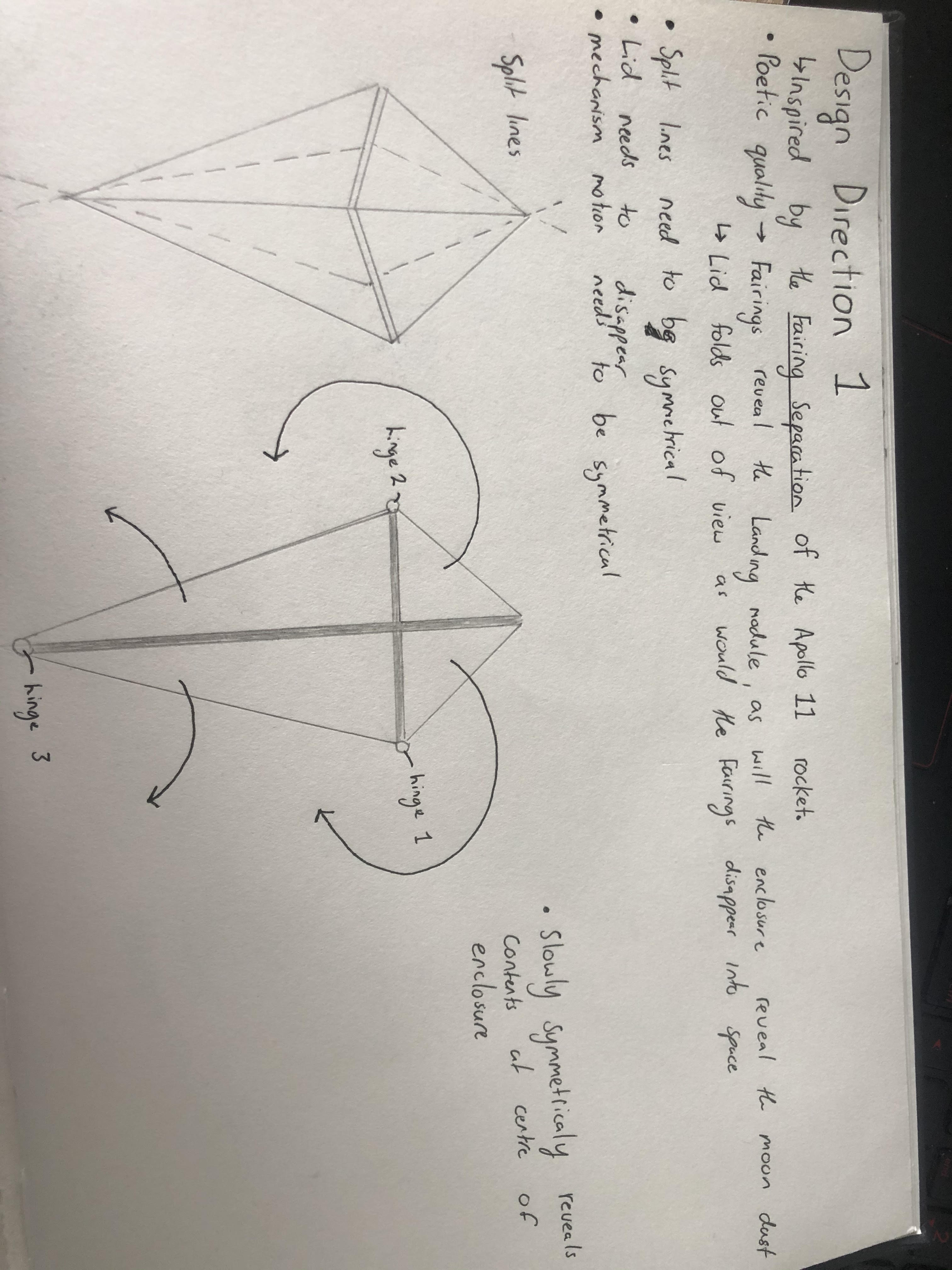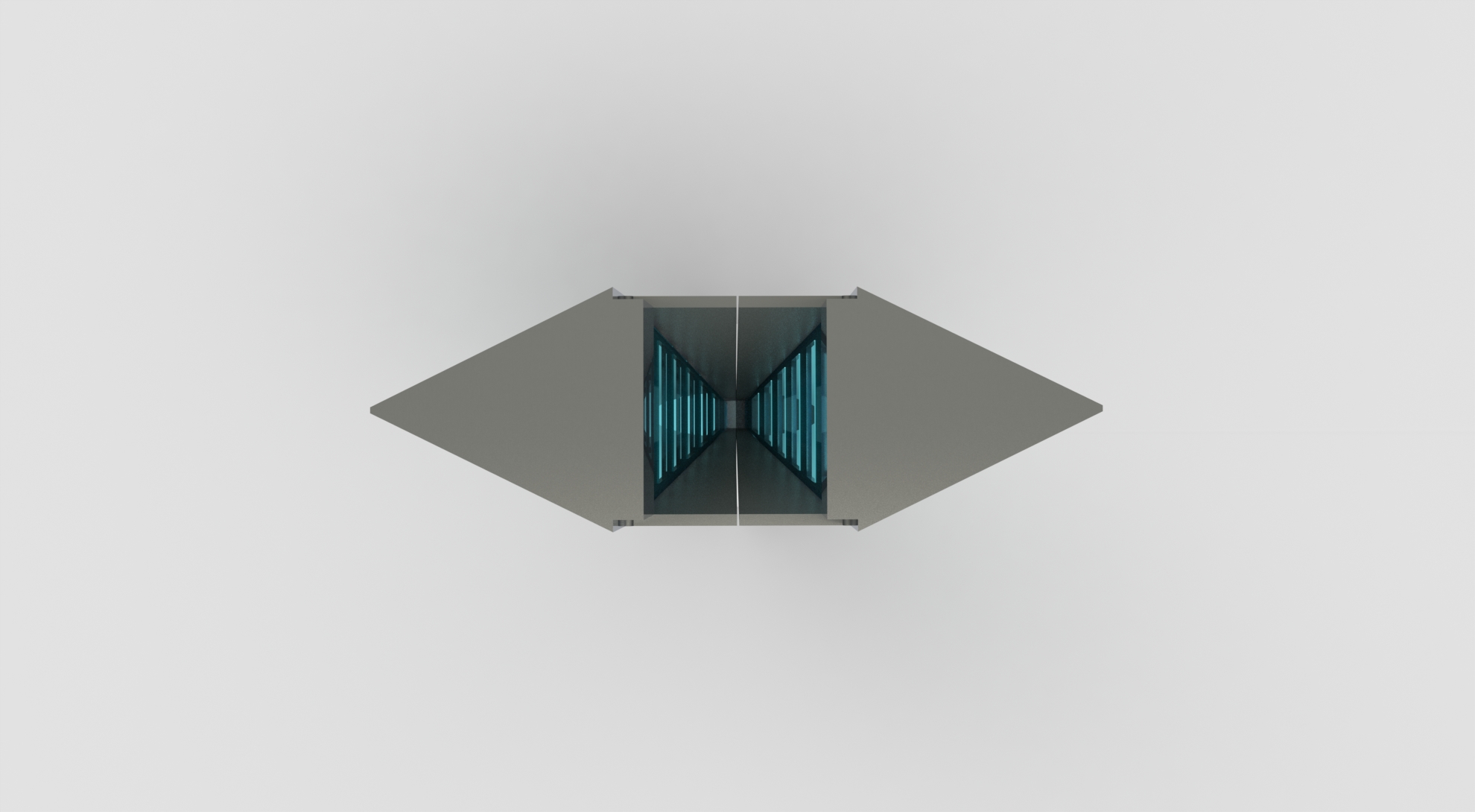The first design direction I decided to pursue is inspired by the fairing separation of the Apollo 11 rocket.
This direction came about after examining the Interior, Exterior relationship of the Apollo 11 rocket, and seeing if this relationship could be translated into an enclosure design.
Fairing Separation is the first stage in which the interior payload of the rocket is revealed, The Command and Landing module, The heart of the mission.
The Fairings protect the Apollo 11 lander as does my enclosure protect the contents (moon dust)
Fairing Separation Test by NASA

Definition: “A payload fairing is a nose cone used to protect a spacecraft against the impact of dynamic pressure and aerodynamic heating during launch through an atmosphere.”
-https://en.wikipedia.org/wiki/Payload_fairing

During Fairing separation in space the symmetrical components are ejected away from the body of the rocket and a left to freely float in space, disappearing behind the rocket. I wanted this to be reflected in this enclosure interior, The lid folds through 180 degrees so that when the enclosure if fully open the lid is not viable from the top. As if left behind in space.
Interior 1

This deign develops on one of my more abstract concepts from project 1. Which upon reflection aligned more with the visual language I was attempting to convey. The hinging mechanism allow for several distinct states and achieves my goal of emulating the fairings through the lid. The first phase of motion of the lid emulates the way the fairings fall away from the body of the space craft. The second phase emulate the fairings being left behind in space as they fold under the body, hiding them from the bird’s eye view. The double split allows the entire interior and mechanisms of the enclosure to be viewed. A president set by my theme.
